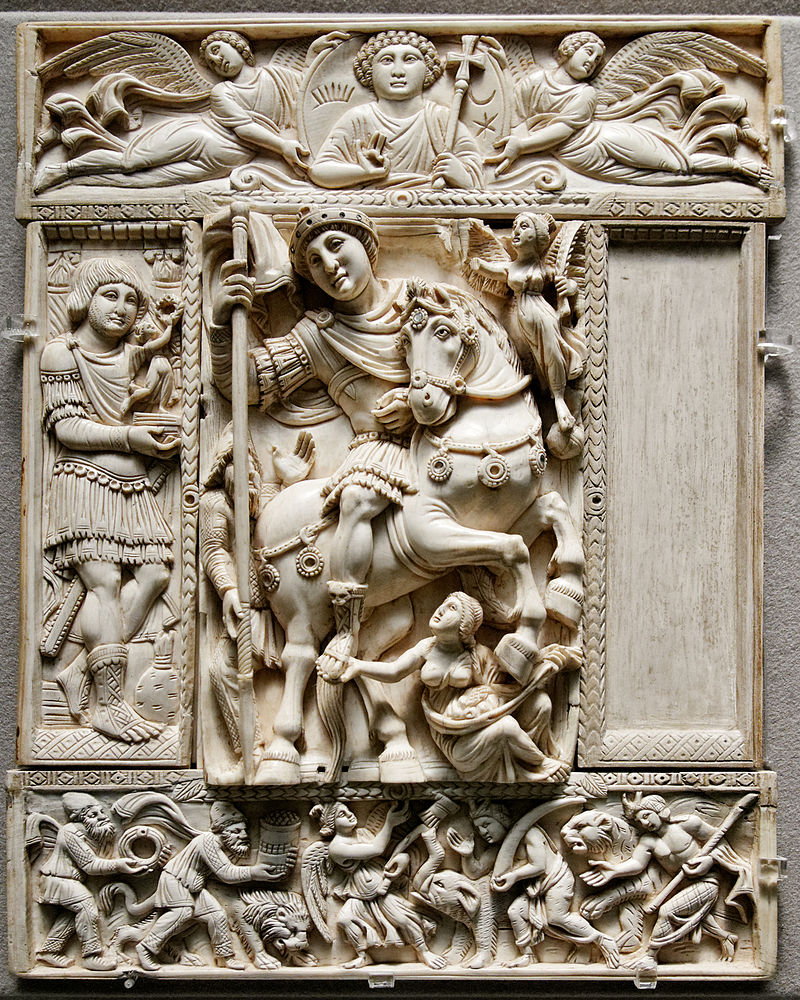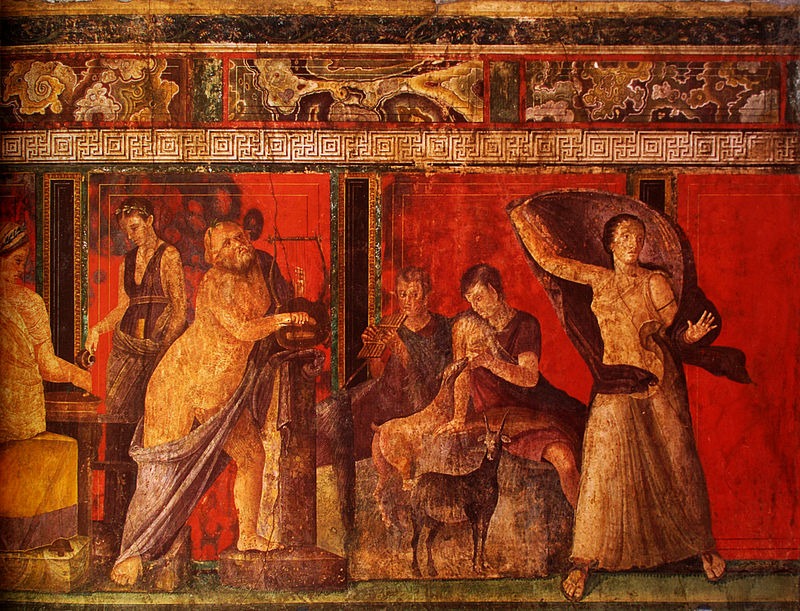Founded in 509 B.C.E., the Roman Empire ruled over most of Europe, and even parts of Africa and Asia for a thousand years. This civilization (which spanned over three continents) was centered around the capital city of Rome. And they promoted arts to a great extent. Rome was also among the biggest cities in the ancient world. You can learn more about this in our article, What Were the Largest Cities in the Ancient World and What Secrets Do They Hold?
You can trace back the origins of the earliest works of Roman art to the founding of this vast Republic. Their art was all-encompassing and diverse, thanks to the influence it derived from cultures that preceded it – including Greek, Ancient Egyptian, the Celtics, and the German arts.
Inspiration for Roman Art
Greek art, undoubtedly, influenced Roman artworks the most, since many of them were imitations of Greek originals. These imitations weren’t complete copies, but rather variants with a Roman flavor. These variations often subverted the theme the original artwork was based on.
For instance, original Greek sculptures were reinvented with an element of humor. Greek poses were presented embellished with Roman drapery and accessories. Roman art was more than just copying; it was adapting, recycling, and subverting. That said, in most cases, you’ll find that the craftsmanship displayed by original Greek masterpieces is far superior to eclectic Roman examples.
This difference quality has to do with another distinctive feature of Roman art: the scale at which it was produced. Sculptures, for example, were mass-produced, save for the head which was carved later on and added to the statue, which illustrates another critical factor. Unlike Greek artists, artists in ancient Rome mostly belonged to the middle class, and their works were often anonymous.
The Republican Era
Ancient Roman art produced during the Republican period, reflects and praises the state, its goals, and interests. Portraits praise soldiers, model citizens, hard work, and wisdom. Life-like portraits and busts show off a hyper-realistic approach and explore the behavior of light and shadows to achieve better realism. The art doesn’t shy away from portraying their subjects the way they are – warts and all. The portraits show aged patrons, with balding heads, scars, wrinkles, and flabby physiques.
This naturalistic style is called veristic– one that presents subjects with all their flaws and personality.
The Imperial Era
During the Republican period, the Senate and elected magistrates ruled over Rome, but this system would collapse by 42 B.C.E, resulting in civil wars. The war ended in 31 B.C.E, with Augustus’ rise to power. Rome was now under Imperial rule, which among other things, caused a shift in the subject matter of Roman art. Where it was once produced in the service of the state, it now served to glorify the ruling family.
In addition to the subject matter, the style also saw a shift. Gone were busts with wrinkly faces and oversized noses. This period favored idealized bodies, balanced proportions, and smooth drapery. In other words, imperial art (or Classical art) borrowed heavily from Greek practice.
The full-length portrait statue Augustus of Prima Porta is a prime example of ‘Classicizing.’ The larger-than-life portrait depicts a young, perfectly proportioned Augustus, with the body of a youthful athlete, even though it is supposed to represent Augustus during his final years.
The Art of Late Antiquity
However, these Classical elements — the smooth and elegant lines, in particular — were abandoned in favor of the Late Antique style. This art style featured rigid poses, firm drapery, unrealistic proportions, and an apparent lack of personality and essence.
The white marble arch – the Arch of Septimius Severus, celebrates the victory of Septimius Severus and depicts the Emperor and his sons riding in a chariot with multiple (almost identical-looking) viewers below them. The stiff poses, deeply carved lines, and absence of individualism here are hallmarks of the art of Late Antiquity. Styles that would follow it, built on it exaggerating the squat proportions and eliminating any degree of naturalism.
Different Forms of Roman Art
As for the primary art forms, Roman art included architecture, full-length portrait statues, portrait and landscape paintings, busts, reliefs (like the ones mentioned in the paragraph above), and minor arts like jewelry, metalwork, and coins.
Architecture
In addition to the surviving Roman architecture, several Roman architectural elements are alive to this day. You can find the influence of Roman architectural design in modern buildings. With the help of concrete, bricks, and structural developments like the dome and the arch, the Romans managed to erect massive structures like the Colosseum.
Sculpture
Busts (sculptures of subject’s head), statues, sarcophagi (sculptures on tombs), and reliefs (figures that are part of a wall), were the four primary forms of Roman sculpture. As touched on above, this artistic expression was detailed and realistic.
The quantity in which these forms were produced was simply staggering for the time. They borrowed heavily from the sculpture of Greece, but owing to their sheer numbers, Sculpture of ancient Rome has survived, but that of ancient Greece didn’t. In fact, many Greek masterpieces have only survived as copies made by Roman artists. Almost 99 percent of Greek art has disappeared, and it’s only preserved only as Roman replicas.
To commemorate and celebrate their successful campaigns, rulers had the history recorded in historical reliefs – carving their victories in stone, in a literal sense. Same with their early busts, Romans sculpted their history with realism. Unlike the Greek expression of this avenue, Romans didn’t depict their victories using scenes borrowed from mythology.
Portrait busts displayed for public view were often stonework but also made use of metal (mostly bronze). Busts of the Emperor were displayed all over the Roman empire, as a reminder to who was in power.
Murals
Finally, we have landscape paintings – the one art form that was wholly Roman and wasn’t influenced by the Greeks. The recovered paintings (mostly murals) that have been found in Pompeii are seascapes and landscapes painted for households and government buildings.
Final Thoughts
The ancient Roman artists who produced the art are unknown, on account of lack of any documentation. But this anonymous lot conveyed the grandeur of their Empire, their rulers, and their values and made it part of their structures, their public sphere, and even their households.


